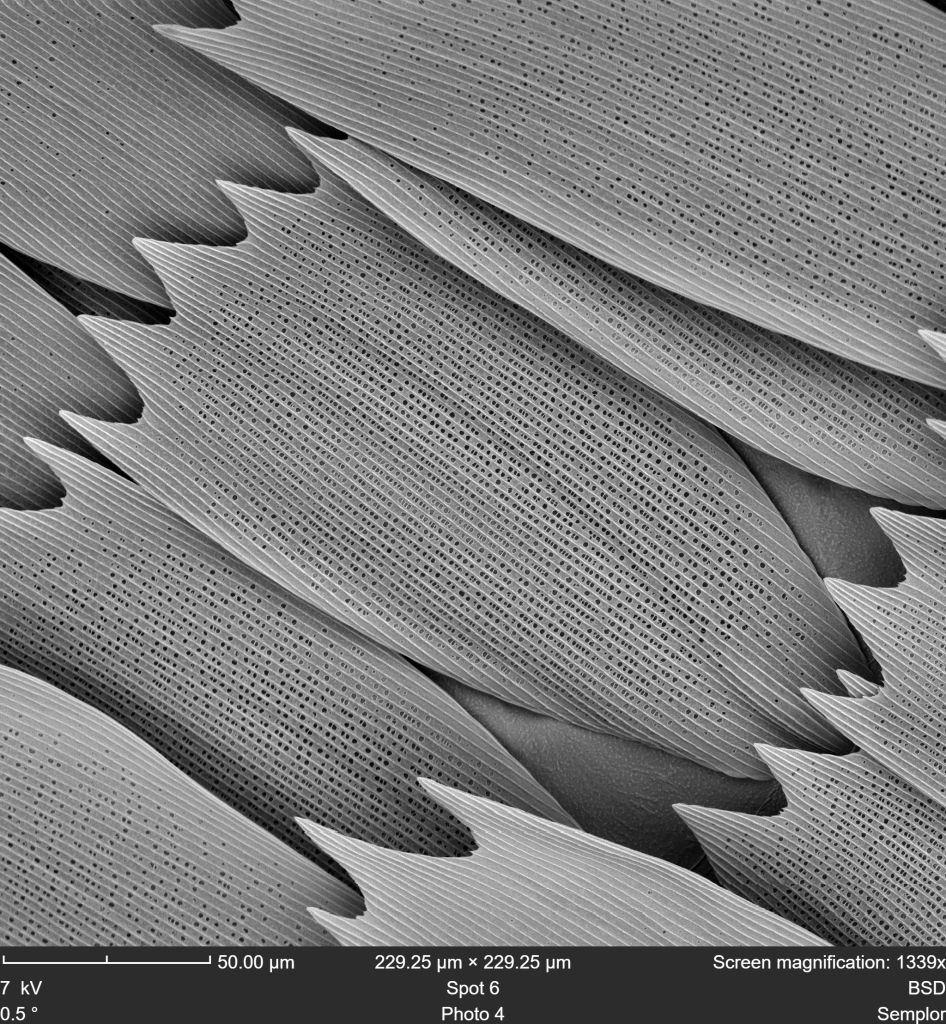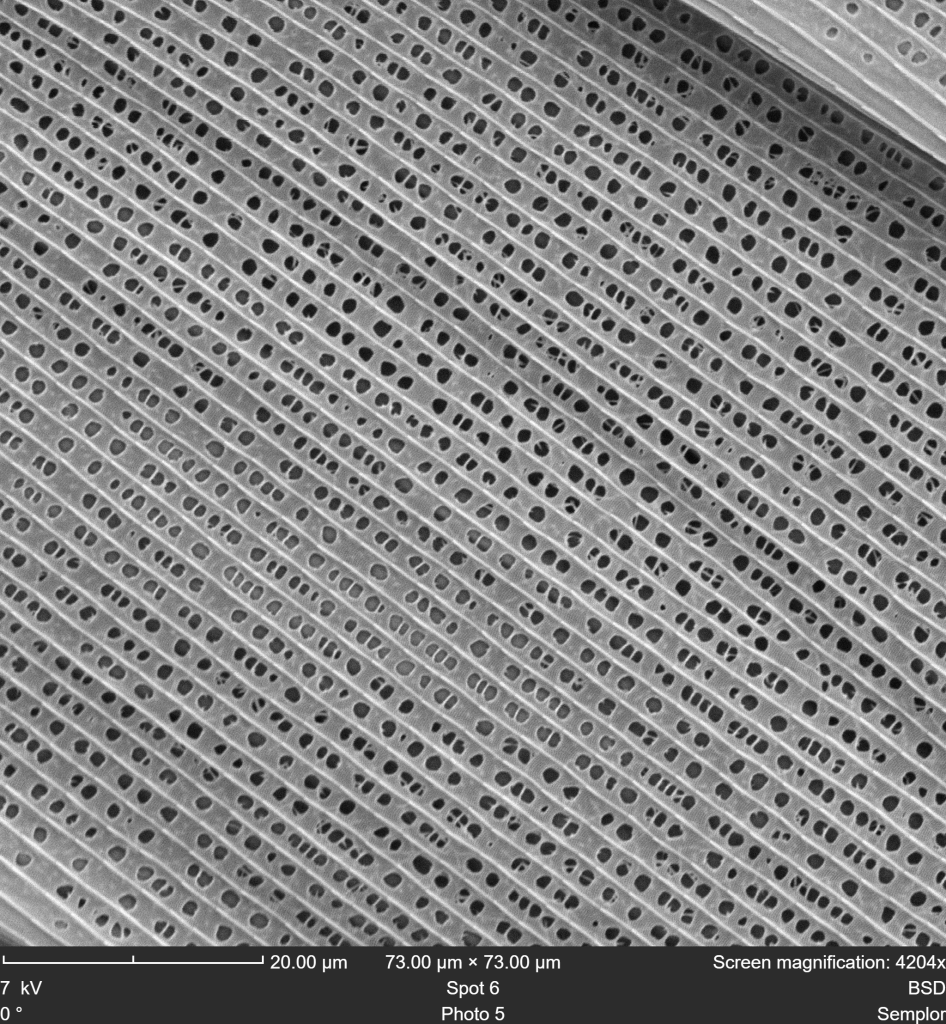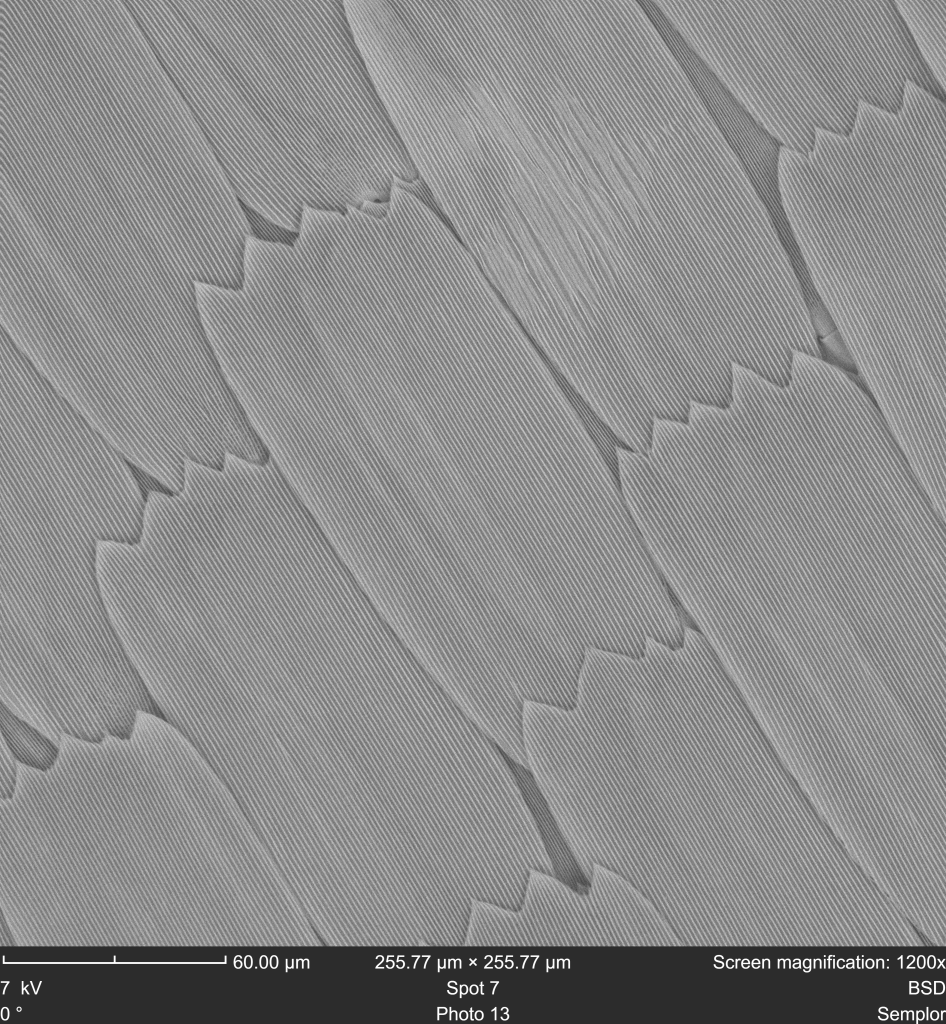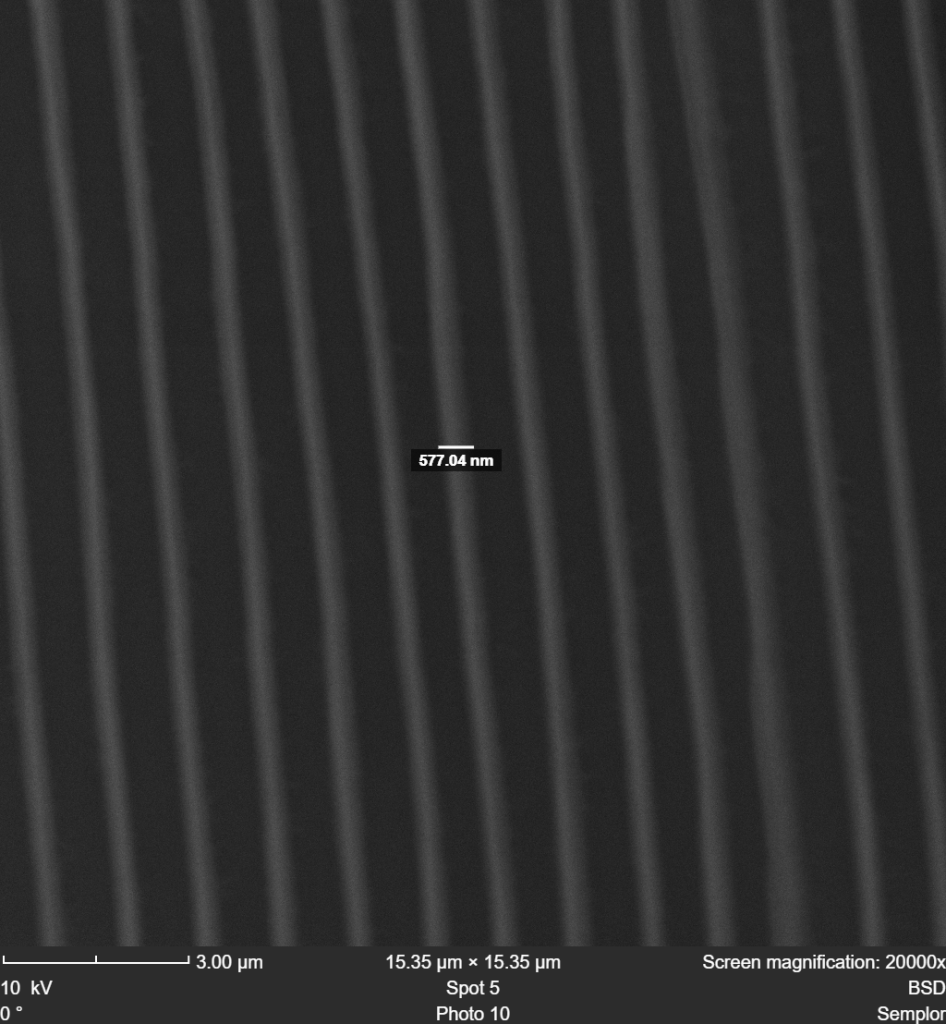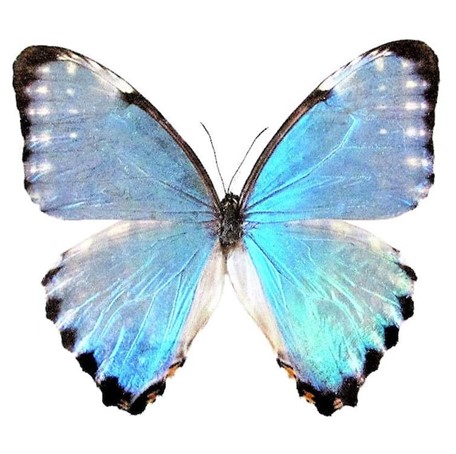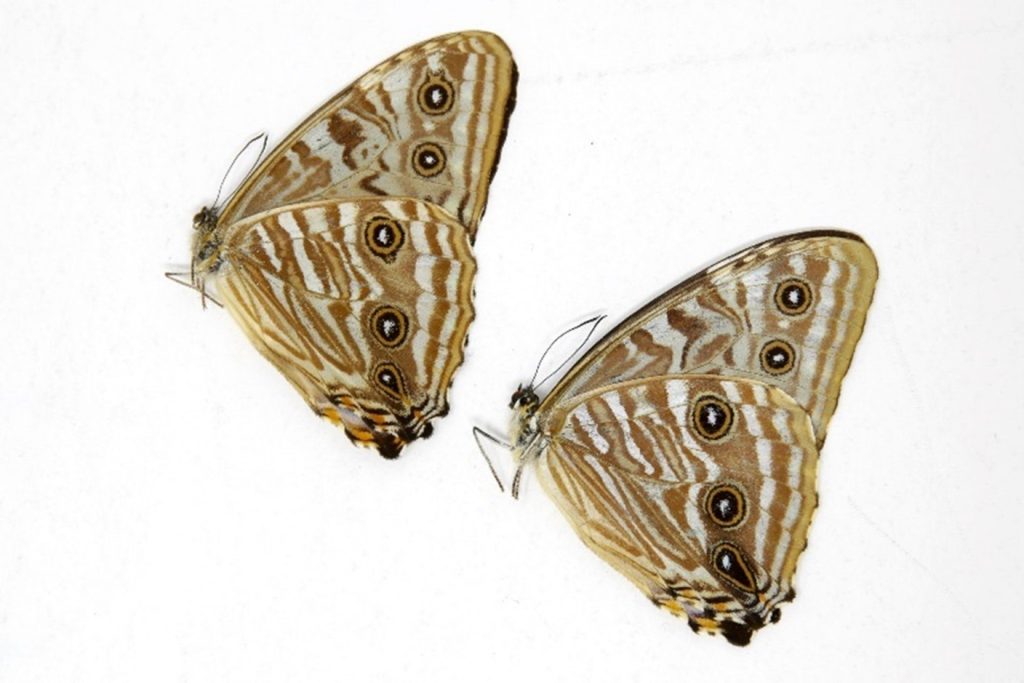Morpho portis butterfly nanostructure imaging and measurements
Morpho portis is a Neotropical butterfly. It is found in Brazil, Uruguay, Venezuela, Colombia, Peru, and Paraguay. This specific morpho portis is from Peru, a majestic creature recognizable for its bright blue color due to the unique nanostructures on the surface of the wings as can be seen in Figure 1.
These nanostructures, composed of microscopic scales arranged in a highly specialized pattern, interact with light to produce the butterfly’s iridescent blue hue through a phenomenon known as structural coloration.
The NANOS tabletop SEM allows us to investigate these intricate surface patterns at high resolution, revealing the detailed architecture that underlies the butterfly’s remarkable coloration. The backside of the wing has been coated with a 5nm gold layer and is imaged in high vacuum mode. The frontside of the wing is not coated and is imaged in the NANOS’ low-vacuum mode.
The backside of the wing of the morpho portis butterfly has a brown tan color as can be seen in Figure 2. SEM imaging reveals that the tan scales have small holes in their structure (Figures 3 and 4).
The front side has a different nanostructure (Figure 5), as can be seen in SEM imaging of the blue scales. When measuring the width of these ‘ridges’ it turns out that they have a comparable width as the wavelength of yellow light as can be seen in Figure 6 (Yellow light has a wavelength between 575-585 nm). To understand why the butterfly appears blue, it can be expressed as white light (the light that surrounds us) minus yellow light is equal to blue light. These ridges remove yellow from the white light and make the wing appear blue. When the ridges get filled up with iso-propanol, the wing loses its irradiance. In conclusion, the butterfly is using nano-technology to produce its color.
This interaction with light is not just a matter of beauty; it has piqued the interest of researchers across various fields, as they seek to understand and replicate these natural designs for advanced technological applications.
These technological applications include, for instance, the development of advanced optical devices, such as color filters and anti-counterfeiting measures in banknotes and documents, creating materials that can change color depending on the viewing angle or the light source, enhancing security and authenticity. Moreover, the unique surface structures have inspired the creation of high-performance, non-reflective coatings used in solar panels, improving their efficiency by minimizing light reflection.
